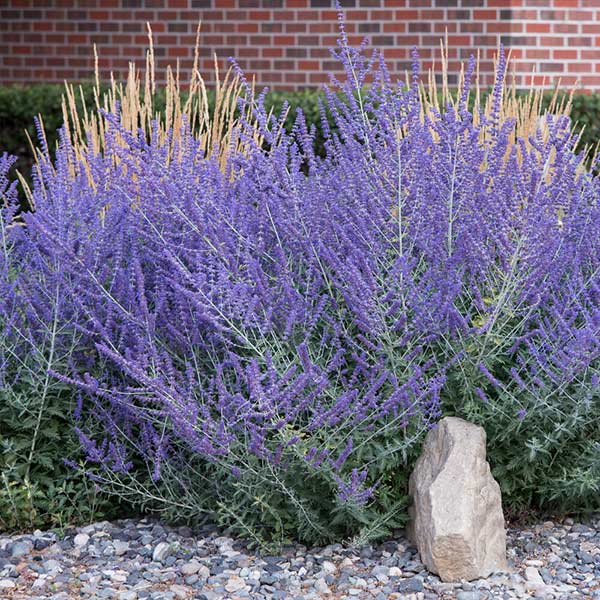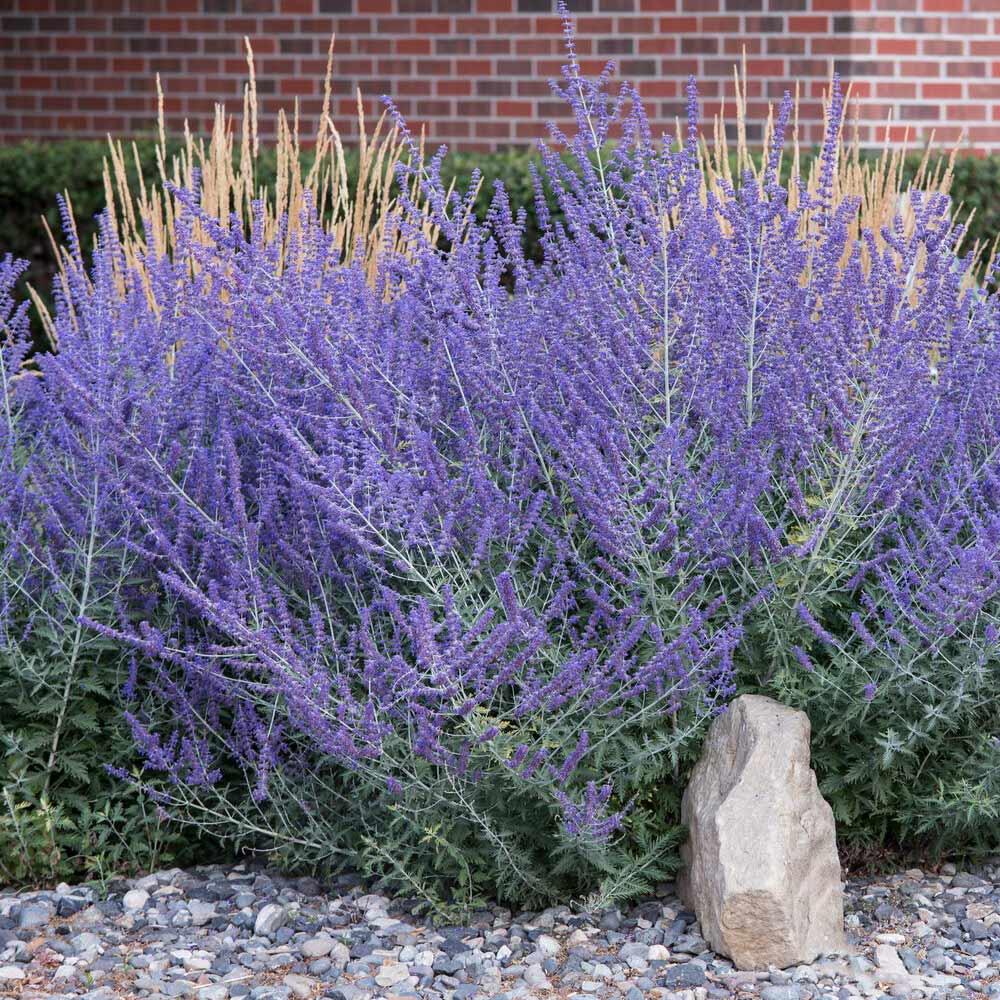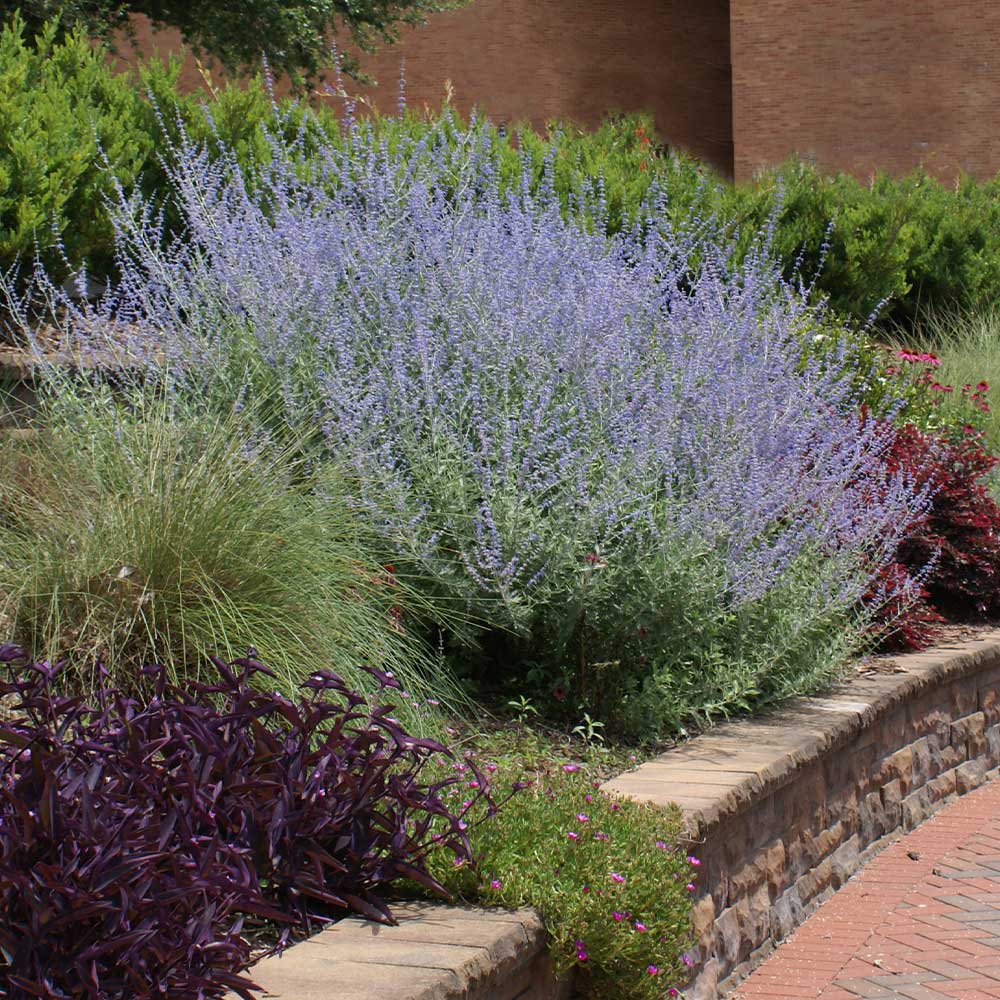Drought Tolerant, Airy & Vigorous Sage
Why Russian Sage Plants?
If you live in a dry climate but want to add whimsical beauty to your landscape, the Russian Sage plant is the way to go! This deciduous shrub grows vigorously, even in arid climates where other plants don't thrive.
The Russian Sage produces blooms in late summer with clusters of airy, lavender-blue flowers. These cotton-candy colored flower clusters are made up of countless tiny, individual flowers that cover the top of its stems. Just below the flowers, narrowly shaped, gray-green leaves nearly disappear into abundant, purple flowers in the summer.
The delicate, blown-by-the-wind nature of the Russian Sage also makes it ideal for adding to any garden style. It's a lively addition to desert-like landscapes, and in lush green gardens, it adds both color and dimension as it sways in the breeze. But most ideally, it's perfect for cottage gardens, placed in open areas, creating a focal point, or planted in rows as hedges.
Whether you plant your Russian Sage in a vibrant green garden or a desert landscape, it makes an excellent companion plant to many other varieties, including perennials, succulents and ornamental grasses.
Plus, you'll be hard-pressed to find a more low-maintenance and equally lovely plant than this. Extremely easy to care for with vigorous growth, tolerance to heat and drought and both pest and deer resistant, the Russian Sage is all-around practical and pretty!
For a reliable and easygoing shrub that will enchant the landscape, choose the Russian Sage. Start growing yours today!
Planting & Care
1. Planting: Plant your Russian Sage in a location with well draining soil and full sun. Once you’ve chosen the location, dig a hole that's 2x the width of the container your plant was shipped in and around the same depth. Remove the plant from the container and gently loosen the roots. Place the plant in the hole and backfill the dirt.
2. Watering: After planting, immediately water your Russian Sage. As the plant becomes established in its new location, water it more frequently. Once established, water as needed.
3. Pruning: You may choose to prune your Russian Sage plant back before the winter as growth occurs on new wood.





Comment